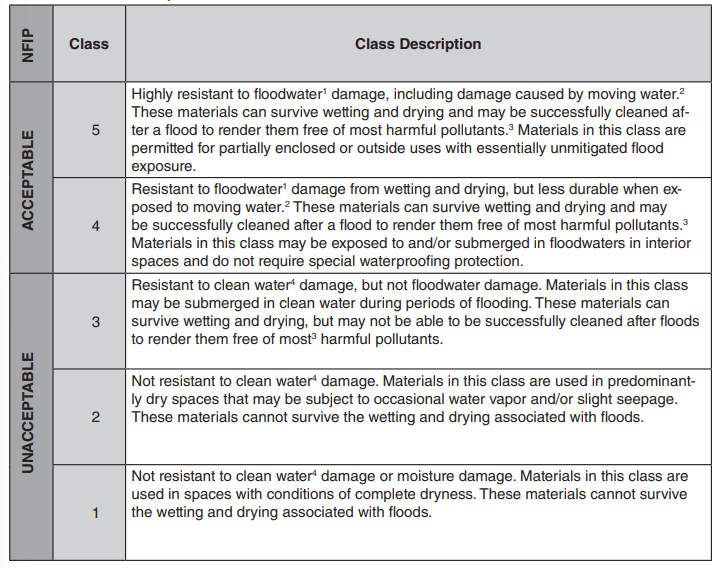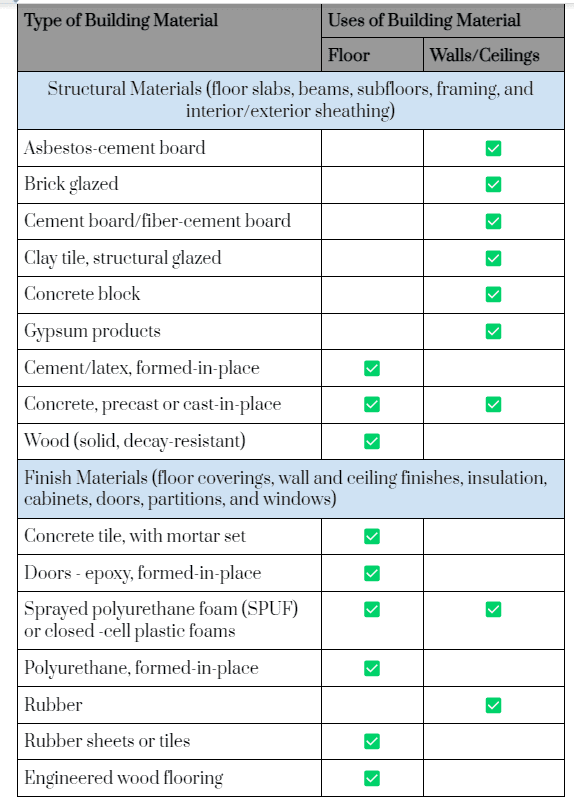Among the things that bear direct contact with flood waters are building materials.
It has the ability to withstand flood waters for at least 72 hours,
without causing significant damage to building materials.
Concrete, ceramic tile, and pressure-treated and sea-treated plywood are considered common.
In addition to pressure-treated lumber, latex or bitumen, also brick, and terrazzo are all common flood-resistant materials.
However, the type of flood-resistant materials used for floors and walls varies.
Flood resistant materials are used for building elements such as walls and floors or other buildings.
that are constructed below baseline flood height (BFE) or flood level for 100 years.
BFE refers to the elevation associated with a “100-year flood,” or a flood with a probability of 1% in any given year.
Classification of materials resistant to flood damage
The National Flood Insurance Program (NFIP) regulations include minimum building design standards for new buildings.
Existing and repairing severely damaged buildings in SFHAs.
Some examples of flood resistant materials used in construction are given in the table below:
flooring materials1. Concrete, concrete tiles and precast concrete. 2. Latex or bitumen, ceramics, clay, panels, terrazzo tiles, vinyl and rubber. 3. Pressure-treated (PT) or corrosion-resistant wood. 4. PT wood and cold-formed steel. |
Table 1:
Various materials are resistant to flood damage
NFIP and FEMA regulations describe five categories.
As for (Table 2), the classified materials are highly resistant to flood water damage.
For those who do not have flood resistance based on their applications in construction.
The classification is based on the base flood height (BFE), the base flood height with respect to a specific reference.
It is usually the 1929 National Geodetic Vertical Datum or the 1988 North American Vertical Geodetic Datum.
According to NFIP, all constructions below BFE are susceptible to flooding, and must be constructed using flood-resistant building materials.

Table 2 has described:
Class of materials based on their resistance to flood water damage.
Flood damage resistance also depends on the application and the properties of the flood water, based on the potential contaminants present in the water.
A proper provision shall be made for the materials, that Classes 1, 2, and 3 shall not be used in flood-resistant buildings.
The table below shows a standardized list of Class 5 and Class 4 materials used in floor,
wall, or ceiling construction below the BFE standard.

Table 3:
Examples of structural and finishing materials for flood-resistant floors and walls.
Masonry and lumber products used below BFE must comply with applicable standards published by the American Society for Testing and Materials (ASTM).
American Concrete Institute (ACI), Truss Plate Institute (TPI),
American Forest and Paper Association (AF&PA) and other appropriate organizations.
Fasteners and connectors involved in flood-resistant construction must also be made of materials resistant to flood damage to comply with NFIP requirements.
In accordance with ASCE 24 for Flood-Resistant Design and Construction,
the International Housing Code (IRC) may require flood-resistant materials for the construction of flood-resistant buildings.
For more architectural news


 العربية
العربية